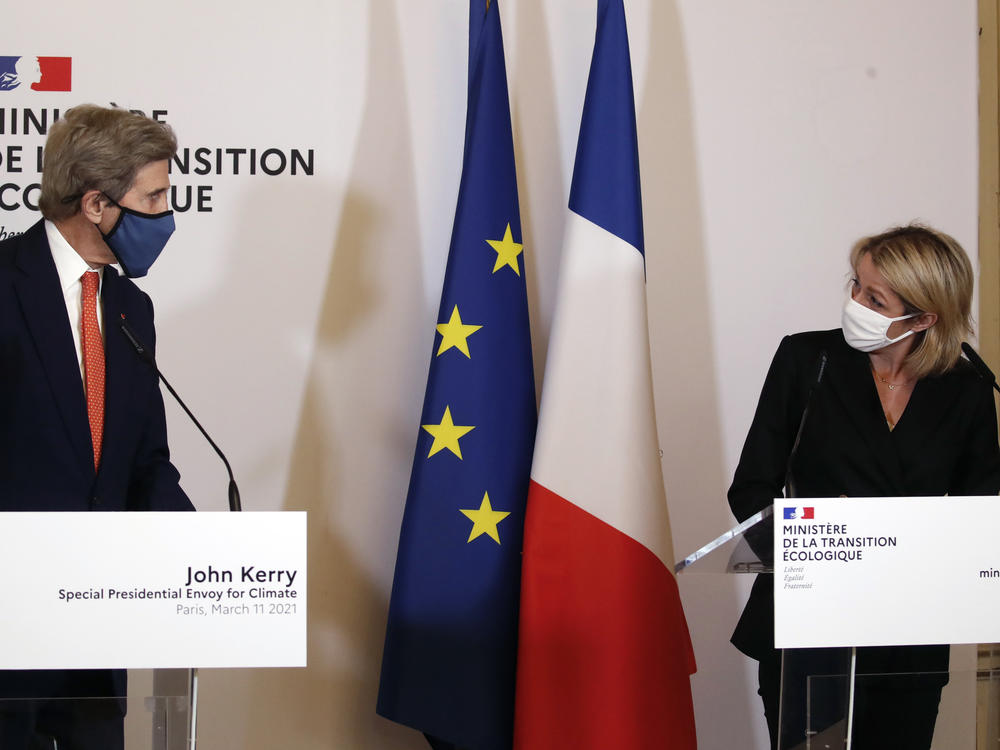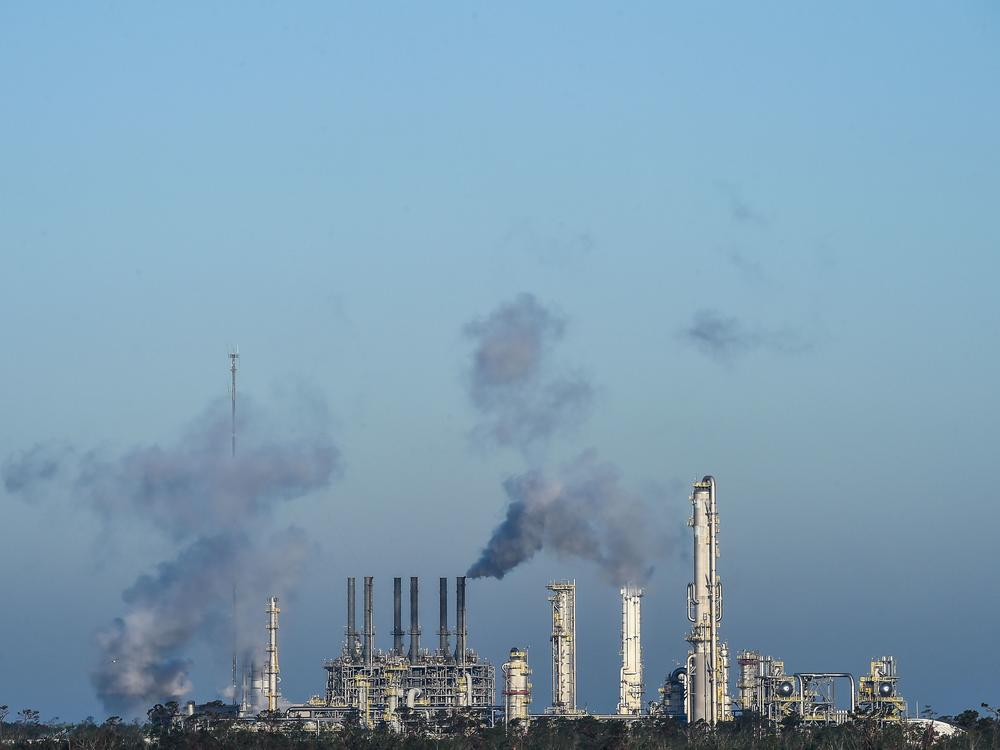Section Branding
Header Content
FAQ: America's New Promise On Climate
Primary Content
Updated April 22, 2021 at 6:14 AM ET
On Thursday, the White House kicked off a two-day summit on climate change where leaders from 40 countries are discussing plans to cut greenhouse gas emissions and ultimately reverse global warming.
The summit highlights the United States' return to the Paris climate agreement, and it is the Biden administration's first major opportunity to reestablish the country as a trustworthy player in international climate diplomacy.
President Biden began the summit by announcing a new U.S. goal to reduce greenhouse gas emissions by at least half over the next decade. It is by far the most ambitious climate goal ever pursued by the federal government, and will require dramatically cleaner electricity and transportation.
The U.S. will also use the summit to invite other countries to announce new, bolder climate goals. Special Climate Envoy John Kerry has spent the last few months criss-crossing the globe, trying to reassure world leaders that the U.S. can be trusted to follow through on its promises.
The Biden administration has its work cut out for it. The U.S. is still the world's largest cumulative emitter of greenhouse gases. Global warming is accelerating. And U.S. emissions are falling far too slowly to avoid the most catastrophic effects of climate change, including inundated coastlines and devastating storms, wildfires and heat waves.
Here's a refresher on where the U.S. stands when it comes to international climate action.
What is the new U.S. promise to tackle climate change?
The U.S. is promising to cut American emissions of carbon dioxide, methane and other planet-warming gases by 50 to 52% by 2030, compared to 2005 levels. Achieving that goal would require that roughly half of the country's electricity come from renewable energy. Electricity from coal would need to all but disappear. Transportation would also need to change dramatically, with more public transit and electric cars and trucks.
Why is the U.S. announcing new climate change goals now?
The U.S. is trying to make up for lost time.
When the Paris agreement was signed in 2015, the Obama administration promised to reduce American greenhouse gas emissions by about 25% below 2005 levels by 2025. The U.S. is not on track to achieve that goal, which itself was not sufficient to curb global warming.
Over the last four years, the federal government did virtually nothing to cut America's greenhouse gas emissions. The Trump administration withdrew the U.S. from the Paris agreement and rolled back limits on emissions from cars and trucks, oil and gas operations and power plants. Some states, cities and companies have tried to reduce emissions on their own, but progress has been very slow. Last week, more than 300 U.S. businesses called on the Biden administration to cut carbon emissions by at least half by 2030, based on 2005 pollution levels.
America's choices affect the whole planet. The U.S. has emitted more total greenhouse gases than any other country, and is still the second largest emitter after China. The Biden administration hopes that new promises to slash emissions in the next decade will help keep global temperatures from rising too high, and will also reestablish American leadership ahead of an annual climate summit in the Fall.
How are the new U.S. climate goals related to the Paris agreement?
The U.S. officially left the Paris agreement last year and officially rejoined it this spring. The agreement requires that every active member make a public commitment to address climate change, such as cutting emissions, maintaining undisturbed forest or investing money in clean energy. That public commitment is called a Nationally Determined Contribution, or NDC.
In the last year, many countries have announced NDCs that are more aggressive than the promises they made when the Paris agreement was first signed. Earlier this week, the UK announced plans to cut emissions by a whopping 78% by 2035, compared to 1990 levels. The European Union has promised to cut emissions by at least 55% compared to 1990 levels. China has promised that its emissions would peak before 2030, which is sooner than it had originally pledged. Japan has promised to reach net zero greenhouse gas emissions by 2050, although it has yet to set specific targets for the coming decade.
The U.S. is now promising to reduce its emissions by at least 50% by 2030 compared to 2005 levels, a goal similar to those set by European countries. Now that the U.S. has announced its new NDC, the federal government has six months to work on a more detailed plan before annual international climate negotiations in November.
The infrastructure package that Congress plans to consider this summer could play a big role. As part of the package, the Biden administration has proposed ending subsidies for fossil fuel companies, building more solar and wind electricity and setting more stringent emissions standards for cars and trucks.
How do all these promises stack up against global warming? Are they enough?
The Earth is already 1 degree Celsius, or nearly 2 degrees Fahrenheit, warmer than it was in the mid-19th century. The goal of the Paris agreement is to keep that increase well below 2 degrees Celsius, and ideally cap it at less than 1.5 degrees Celsius in order to avoid widespread devastation from heat waves, storms and rising seas.
Before the U.S. announced its new goal, the U.N. estimated that humanity was on track to cause at least 3 degrees Celsius, more than 5 degrees Fahrenheit, of global warming.
Scientists say that emissions must drop rapidly, starting immediately, and get to zero in the next 30 years. If the U.S. achieves its new goals, it will put America on track to achieve this target. But in order to control global temperatures, other major polluting countries, especially China, will need to reduce their emissions more quickly than they are currently planning to.
Can the U.S. be punished if it doesn't meet its climate goals?
Under the Paris agreement, a country can't be punished for failing to meet its goals. In fact, the loose, choose-your-own-adventure structure of the Paris agreement was championed by the U.S. when the agreement was being drafted in 2015. At the time, the Obama administration pushed for language that allowed each country to set its own goals. That helped bring a lot of wary countries to the table, including China, Saudi Arabia and Russia.
That also means that the power of the Paris agreement is diplomatic, not punitive. Big, polluting economies like the U.S., European Union, China, India and Japan can pressure each other to cut emissions by doing it themselves. The U.S. has gotten a lot of diplomatic pressure from European countries in recent years, as those countries have slashed emissions. Historically, the U.S. has also exerted pressure on countries like China and Brazil, pushing them to cut emissions and maintain forests respectively.
There are also economic incentives to follow through on climate promises. Countries that invest in clean energy technology, for example, may have an upper hand in the clean global economy of the future.
Still, those diplomatic and economic pressures might not be enough to drive the rapid, immediate emissions reductions necessary to avoid catastrophic global warming.
Copyright 2021 NPR. To see more, visit https://www.npr.org.


